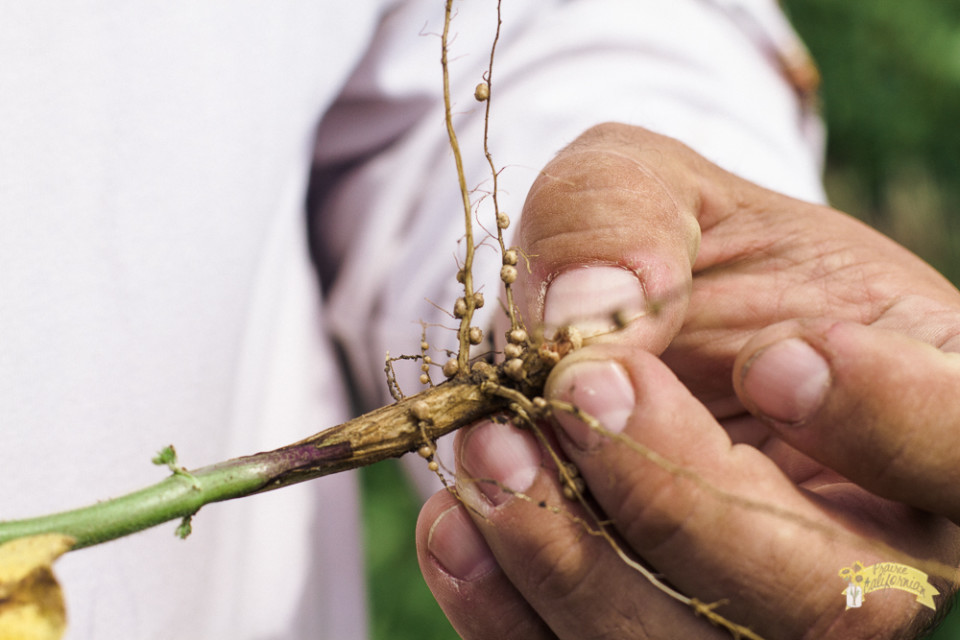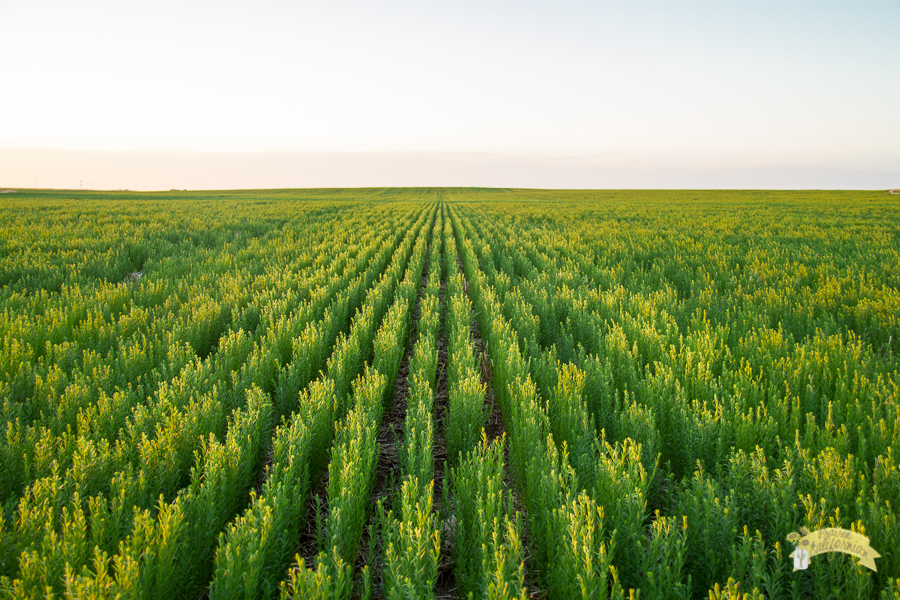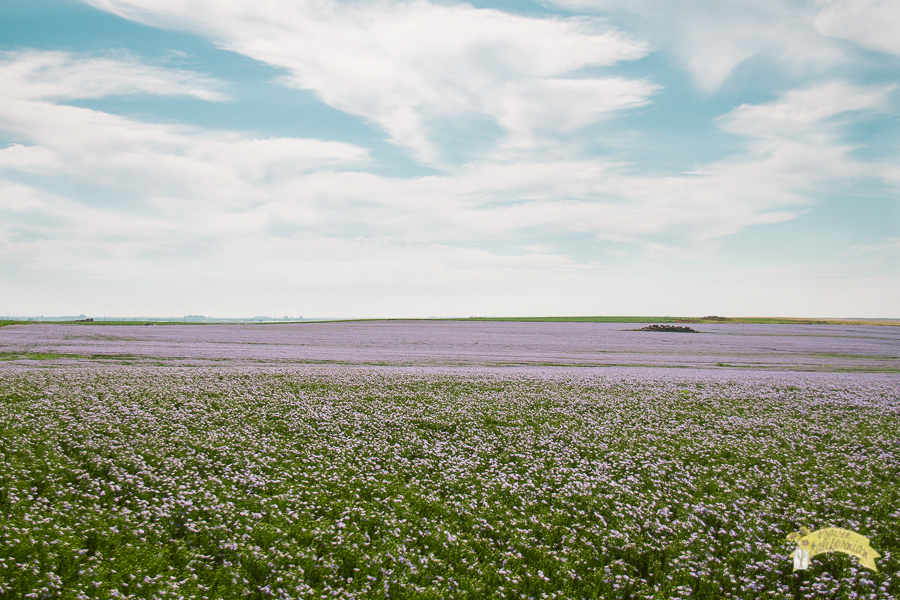
This last weekend, my farmer’s pickup pulled into the driveway on a Sunday afternoon. Unannounced to me, he flew in the house and asked if I wanted to go check fields with him. Immediately this made my heart swell because he knows: a. how much I love being with him, b. how much I love to get out and explore with my camera, and c. I, too, like to keep progress on how our crops are doing! So I threw on some jeans, grabbed my camera, and hopped in the pickup with him. It was a gorgeous blue sky day, no wind, sunshine.. Perfect day to drive around with the windows down and check crops.. Every year when the seeds get in the ground, my social media timelines are sure to be full of photos of farmer’s crops. And I, too, take my fair share of crop photos. It’s fun to check progress every week or after the rain of how much the crops have grown. It’s one of my favorite times of year when crop tours become a regular evening thing. And especially after there’s been rain or other adverse weather conditions. There’s just something about getting into the wide open and tromping around in a field that rejuvenates the soul. But for those of you outside of agriculture, you may be wondering why we find it necessary to consistently check crops. What are farmers looking at when they check fields…?
Stand
The plant stand or just stand is a very commonly used term in agriculture and it basically means how the plants are growing in the field. The stand is expressed as either space between plants (rows) or as optimum plant population per unit area. If you remember back to my Planter post, we can control populations when we plant the field by how many seeds the planter is dropping into the ground. But just because we put the seeds in the ground doesn’t necessarily mean that each and every one is going to grow. Population is a big deal because if you plant the seeds too close together the plants will compete for moisture and nutrients and too far away they may not receive nutrients. A plant stand that has big gaps or lots of missing plants (seed that didn’t germinate) will yield less than a plant stand that has even spaced and uniformed plants growing. Many things can effect stand from seeds that didn’t germinate to once the plants are growing, hail, disease, drought can all reduce your plant stand.
Soil
If it rained, we are checking to see how wet it is. If it hasn’t rained, we are checking to make sure the crops are getting enough sub-soil moisture. We have been having a lot of rain lately… Like more rain in the past few months than we had all summer last year. Every year farming is different, it was dry last year and it is wet this year. The farm is located 20 miles away from our house in town so just because we received x amount of inches of rain in town doesn’t mean the farm received that much or vice versa. The farm actually has received more rain than town… And that means there is a lot of sitting water in the fields. If you’ve never visited North Dakota, it’s not quite as flat as you’d imagine. It’s more like rolling hills of prairie. This means there are a lot of low spots where water can collect and a few fields have sitting water in them where our corn seed has died because it was unable to get oxygen and grow. This also effects stand as mentioned above.
Roots
The roots of the plant can tell us a lot. For both corn and soybeans, looking at the roots can tell us at what stage the plant is growing, or kind of like telling us the age of the plants. As soybean plants grow, they develop nodules on their roots and as corn plants grow, they establish brace roots (roots that help stabilize the plant). Roots can also tell us about the health of the plant. Healthy roots (both area and number of root tips) reach into the soil to uptake moisture and nutrients and will ensure for healthy crops. Healthy roots will also help produce stronger plants that are able to better withstand stress from things like adverse weather conditions, insects, or disease. Speaking of disease, pulling up plants can help us identify if indeed there is disease in the plant, often times it will start in the roots before it begins effecting the plant and we see the conditions visually. Disease in plants can spread rapidly and is especially critical to look out for when it’s been warm and humid.
Leaves
Much like the roots, the leaves on the plant can also tell us a lot. It too can help us identify the growing stage the plant is in and also the health of the plant. Notice below how the corn growing isn’t a deep green but more of a yellowish green color. This means the corn needs more sunlight. If the plant is being deprived of something, the leaves will signal that. When we pull up a plant, not only are we looking at the roots, we are also looking at the leaves. Or rather, counting the leaves. In a wheat plant each leaf is called a “tiller” and by counting these, we can tell what stage of growth the wheat is in. And on corn, the leaves are called “collars”. For a more in depth description of the growing stages of corn and wheat, the University of Illinois Extension Office has put out great interactive diagrams on both Corn growth stages and Wheat growth stages.
Weeds
It is also important to not only be looking at the plants, but also looking for weeds. Much like if seeds are planted too close to one another, weeds create competition for the plants. Some fields will regularly grow the same weeds, but scounting fields lets us be able to identify if there are new weeds that are growing. With any sort of weed growing in the field, it is best to identify them and deal with them while they are still at low levels. Weeds are called weeds for a reason, they can be hard to get rid of. And in some worst case scenarios, it may even be necessary for you to get out there and pull them up. Herbicide resistant weeds have been a hot topic of discussion amongst farmers. For more information about the topic, The University of Minnesota Extension Office has put out a great article on the subject. With proper herbicide as well as crop management techniques, you can avoid or manage herbicide resistant weeds.
Insects/Pests
Much like weeds or disease or anything else, pests or insects can become a real problem in crops if not address or taken care of. Not all insects in your field are harmful and farmers aren’t looking to eradicate all insects, only the ones that provide harm to the plants. Many insects are mobile so just because you don’t visually see them there doesn’t mean there isn’t damage done and there are several ways to look for insect damage First is looking for foliage (or leaf) damage, often times you will see discoloring or even chew marks from where the insect was chomping on the plant’s leaves. Once the plant has begun to seed, it’s important to look at the seed head or seed pods. Some insects will only effect the seeds inside, for example, think about how insects like sweet corn and often times you don’t even know the corn cob is bad until you open it up. Some insects will burrow into the stems of plants so it’s important to check the stems. And then finally, like I said before, roots. Some insects are in the soil and munch on the roots of the plants. This is also another reason why farmers take a look at the soil. Sometimes digging in the soil around the plants can uncover insects in the soil that may be causing damage.
The more you are in the field, the quicker you can address and identify potential problems, whether it be disease, insects, or weeds. Like I said with planting, farmers try to get it right the first time. Your time and your inputs (fertilizer, seed, chemical) are expensive. It’s just money going down the drain if you don’t keep on top of your crop health and well being while it grows. It doesn’t take long before a small problem becomes a big problem and the next thing you know your whole field is effected. All problems will decrease yield and yield equals your payback for all those inputs you paid out to grow the crops. Farming is by no means easy. It takes a lot of careful, calculated, and sometimes guessing decision making. Like I’ve said before, you can do everything right and your crops can still fail if you aren’t met with favorable weather. And just like with choosing seed, there is no one solution fits all. People who farm here in North Dakota farm differently from people who farm down in the South or on the East coast. It’s up to each farmer to make decisions in the best interest of his/her fields and his/her crops!
And besides, who wouldn’t want to be out in the field when you’ve got sights like this…?
For more information of Field Scouting, here is a great manual.





It seems like it takes a lot of work to keep crops in good nick. I’d say the bugs and weeds are the most frustrating part!
Another great blog post! Good explanations. Keep up the good work!
You have been nominated for the versatile blogger award by me! I hope you enjoy it!
Love this! I am a city girl who will be married to a corn seed farmer 10 years next month. I learn something new when I read your blog and love it! Thanks!
Author
AWW YAY!! That makes me beyond happy to know that people out there are learning alongside me!!! Congrats on your engagement and upcoming marriage!! Let me know how it goes!! And thank you for commenting!!
Great blog! Great explanations of what is all going on with crop farming 🙂 You should hook up with some other ND Ag Ladies who are also teaching others about the importance of ag (http://findourcommonground.com/your-community/north-dakota/)
Author
Thank you so much Krista! I am sharing as I learn! 🙂 Added you both on Facebook! Always love to make connections with our fabulous North Dakota women!!